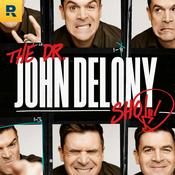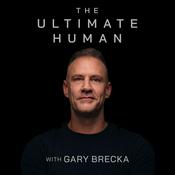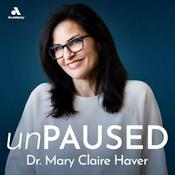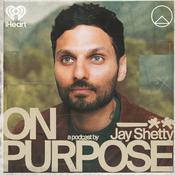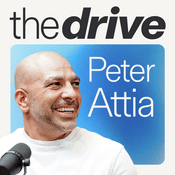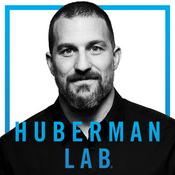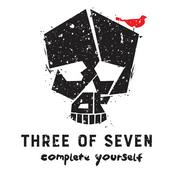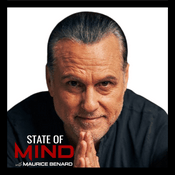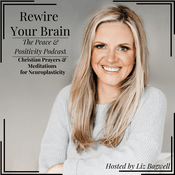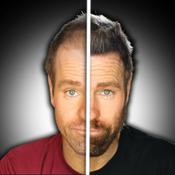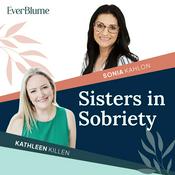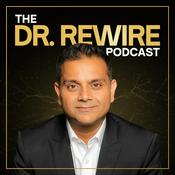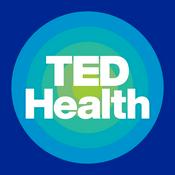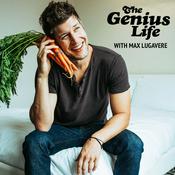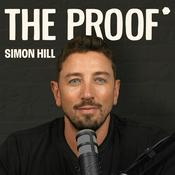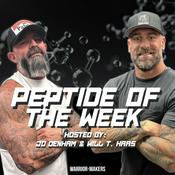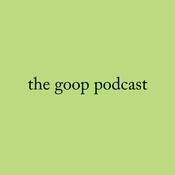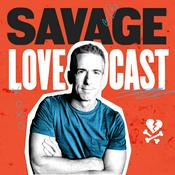355 episodes
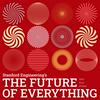
The future of lipids in evolution
12/19/2025 | 32 mins.
Microbes are awesome, says biologist Paula Welander. They have shaped Earth’s chemistry and its environment over billions of years, including oxygenating the planet to make it habitable for larger life forms. In turn, microbes have been shaped by that very same environment, evolving as the climate has evolved, she says. Welander now studies the lipid membranes of ancient microbes, which can endure for millions of years, to understand this evolution and where we might be headed in the future. Microbes are our connection to the ancient world, Welander tells host Russ Altman on this episode of Stanford Engineering’s The Future of Everything podcast.Have a question for Russ? Send it our way in writing or via voice memo, and it might be featured on an upcoming episode. Please introduce yourself, let us know where you're listening from, and share your question. You can send questions to [email protected] Reference Links:Stanford Profile: Paula V. WelanderConnect With Us:Episode Transcripts >>> The Future of Everything WebsiteConnect with Russ >>> Threads / Bluesky / MastodonConnect with School of Engineering >>> Twitter/X / Instagram / LinkedIn / FacebookChapters:(00:00:00) IntroductionRuss Altman introduces guest Paula Welander, a professor of Earth Science at Stanford University.(00:04:06) Why Study Microbial LipidsWhy lipids are essential for modern microbiology and Earth’s history.(00:05:19) Diversity of Microbial MembranesHow bacteria and Archaea build different kinds of membranes.(00:07:15) Reconstructing Ancient EnvironmentsUsing specific lipid biomarkers to understand the early planet.(00:09:20) Chemical Fossils vs. Organism FossilsWhy microbes don’t leave traditional fossils—but their lipids do.(00:10:55) Lipids as Environmental CluesHow certain lipids indicate the environments organisms lived in.(00:12:36) Archaea: A Distinct and Ancient EntityArchaea’s evolutionary importance and chemically distinct membranes.(00:15:43) The Lipid DivideWhy eukaryotic membranes resemble bacterial, not Archaeal, membranes.(00:17:12) Tracing Membrane EvolutionRecent breakthroughs in studying Archaeal lineages related to eukaryotes.(00:19:11) Lipid Preservation Over TimeHow archaeal lipids are especially reliable as long-term biomarkers.(00:20:58) Sterols as BiomarkersThe role sterols, including cholesterol, play in lipid archeology.(00:23:14) Bacterial Cholesterol DiscoveryThe discovery that a rare bacteria can synthesize sterol precursors.(00:25:02) Functional Roles of Bacterial SterolsThe possible roles sterols may play in microbial membranes and cell function.(00:26:31) Archaea in the Human GutThe number and types of Archaea found in the human microbiome.(00:28:43) Archaea and AntibioticsWhether Archaea react similarly to bacteria when exposed to antibiotics.(00:29:46) Future In a MinuteRapid-fire Q&A: hope, research needs, and alternate career dreams.(00:31:43) Conclusion Connect With Us:Episode Transcripts >>> The Future of Everything WebsiteConnect with Russ >>> Threads / Bluesky / MastodonConnect with School of Engineering >>>Twitter/X / Instagram / LinkedIn / Facebook Hosted by Simplecast, an AdsWizz company. See pcm.adswizz.com for information about our collection and use of personal data for advertising.

The future of neurodegeneration
12/12/2025 | 34 mins.
Molecular biologist Judith Frydman studies the nuances of protein folding and how defects in the process lead to neurodegenerative diseases. Her team studies protein folding in human cells and in model organisms, like yeast and worms, to understand the molecular events that precipitate harmful protein defects in humans. In one example, Frydman’s team explored how aging affects the creation and the quality of proteins in the brain, leading to cognitive problems. She is now looking to develop therapies – someday perhaps leading to cures – to debilitating diseases such as Alzheimer’s, Parkinson’s, Huntington’s, ALS, and others. The power of science gives her true hope in these important pursuits, Frydman tells host Russ Altman in this episode of Stanford Engineering’s The Future of Everything podcast.Have a question for Russ? Send it our way in writing or via voice memo, and it might be featured on an upcoming episode. Please introduce yourself, let us know where you're listening from, and share your question. You can send questions to [email protected] Reference Links:Stanford Profile: Judith FrydmanConnect With Us:Episode Transcripts >>> The Future of Everything WebsiteConnect with Russ >>> Threads / Bluesky / MastodonConnect with School of Engineering >>> Twitter/X / Instagram / LinkedIn / FacebookChapters:(00:00:00) IntroductionRuss Altman introduces guest Judith Frydman, a professor of biology and genetics at Stanford University.(00:04:00) Linking Protein Folding to AgingHow aging disrupts protein-folding machinery across many organisms.(00:07:16) Universal Aging PatternsThe similar age-related protein-folding defects found across organisms(00:09:27) Studying Killifish AgeingResearch on the African killifish as a rapid-aging model organism.(00:13:05) Ribosome Function DeclinesHow aging causes ribosomes to stall and collide, creating faulty proteins.(00:15:31) Aging Across SpeciesThe potential factors causing alternate aging rates in different species.(20:11) What Fails Inside Aging CellsThe cellular components that are leading to bad protein creation.(00:24:04) Therapeutic ApproachesPotential interventions to combat cellular and neurological degeneration.(00:25:12) Gene vs. Small-Molecule TreatmentsHow some interventions may be better suited for certain diseases.(00:27:47) Ribosome Drug PotentialWhy ribosomes and translation factors are viable drug targets.(00:28:56) Next Steps in Aging ResearchUsing human skin fibroblasts to study human aging mechanisms.(00:31:46) Future In a MinuteRapid-fire Q&A: scientific progress, young researchers, and archeology.(00:33:54) Conclusion Connect With Us:Episode Transcripts >>> The Future of Everything WebsiteConnect with Russ >>> Threads / Bluesky / MastodonConnect with School of Engineering >>>Twitter/X / Instagram / LinkedIn / Facebook Hosted by Simplecast, an AdsWizz company. See pcm.adswizz.com for information about our collection and use of personal data for advertising.

The future of ribosomes
12/05/2025 | 34 mins.
Maria Barna is an authority on ribosomes – “life’s most ancient and spectacular molecular machines.” Ribosomes make proteins in the body. There can be a thousand different types of ribosomes in a single cell, she says, each with a specific job to do. But sometimes things go awry and ribosomes get “hijacked,” leading to disease. Barna studies these “diabolical” variations to find new therapies to treat diseases ranging from cancer and COVID to Parkinson’s. When diseases hit, it’s all about the ribosomes, Barna tells host Russ Altman on this episode of Stanford Engineering’s The Future of Everything podcast.Have a question for Russ? Send it our way in writing or via voice memo, and it might be featured on an upcoming episode. Please introduce yourself, let us know where you're listening from, and share your question. You can send questions to [email protected] Reference Links:Stanford Profile: Maria BarnaConnect With Us:Episode Transcripts >>> The Future of Everything WebsiteConnect with Russ >>> Threads / Bluesky / MastodonConnect with School of Engineering >>> Twitter/X / Instagram / LinkedIn / FacebookChapters:(00:00:00) IntroductionRuss Altman introduces guest Maria Barna, a professor of genetics at Stanford University.(00:04:21) Origins of Ribosome ResearchMaria explains why ribosomes became the focus of her work.(00:06:14) Ribosome Function and ScaleRibosomes’ functions and the energy required for their production.(00:08:28) Ribosomes as MachinesHow ribosomes influence which proteins are produced and when.(00:09:48) Ribosome RegulationThe regulatory layers within ribosomes and their possible variants.(00:14:35) Ribosomes and DiseaseHow ribosomal dysfunction is linked to a wide range of diseases.(00:18:16) Ribosome Mutations and DevelopmentCongenital disorders that can be attributed to specific ribosomal mutations.(00:20:44) RNA vs. Protein OutputWhy RNA measurements alone do not accurately predict protein levels.(00:24:16) Designing Ribosomes for TherapyThe potential of using engineered ribosomes for target therapies.(00:26:16) Small-Molecule Ribosome ModulatorsScreening compounds that may enhance ribosome activity for treatments.(00:28:39) Future Ribosome ProfilingIsolating individual ribosomes to understand their specific roles.(00:30:35) Future In a MinuteRapid-fire Q&A: scientific progress, community, and alternative career interest.(00:34:01) Conclusion Connect With Us:Episode Transcripts >>> The Future of Everything WebsiteConnect with Russ >>> Threads / Bluesky / MastodonConnect with School of Engineering >>>Twitter/X / Instagram / LinkedIn / Facebook Hosted by Simplecast, an AdsWizz company. See pcm.adswizz.com for information about our collection and use of personal data for advertising.

Best of: How to take waste out of wastewater
11/28/2025 | 29 mins.
In October, chemical engineer Will Tarpeh was awarded a 2025 MacArthur “Genius Grant” in recognition of his pioneering work to turn wastewater into a source of valuable materials. Will envisions a future in which the concept of wastewater is obsolete, thanks to advances in recycling. A couple of years ago, we sat down to talk with him about this work, and we hope you’ll take another listen today to learn more about the research Will is doing to transform the potential of wastewater into resources.Have a question for Russ? Send it our way in writing or via voice memo, and it might be featured on an upcoming episode. Please introduce yourself, let us know where you're listening from, and share your question. You can send questions to [email protected] Reference Links:Stanford Profile: William Abraham TarpehConnect With Us:Episode Transcripts >>> The Future of Everything WebsiteConnect with Russ >>> Threads / Bluesky / MastodonConnect with School of Engineering >>> Twitter/X / Instagram / LinkedIn / FacebookChapters:(00:00:00) IntroductionRuss Altman introduces Will Tarpeh, a professor of chemical engineering at Stanford University.(00:03:01) Wastewater as a Modern MineHow elements like nitrogen and phosphorus can be recovered from waste.(00:04:15) Path to Sanitation ResearchWill shares what led to his interest in studying wastewater.(00:06:55) The Science of SeparationThe electrochemical and material techniques to extract valuable compounds.(00:08:37) Urine-Based FertilizerHow human urine could meet up to 30% of global fertilizer needs.(00:11:08) Drugs in WastewaterThe potential of reclaiming pharmaceuticals from waste streams.(00:14:14) Decentralized SanitationOpportunities for neighborhood or household-scale treatment systems.(00:16:48) Source Separation SystemsHow dividing waste at the source improves recycling and recovery.(00:18:56) Global Sanitation ChallengesWays that developing countries can adopt modern waste solutions.(00:23:51) Preventing Algal BloomsThe systems that are helping to reduce nutrient pollution and dead zones.(00:27:16) The Urine SummitA community advancing urine recycling and sustainable sanitation policy.(00:28:43) Conclusion Connect With Us:Episode Transcripts >>> The Future of Everything WebsiteConnect with Russ >>> Threads / Bluesky / MastodonConnect with School of Engineering >>>Twitter/X / Instagram / LinkedIn / Facebook Hosted by Simplecast, an AdsWizz company. See pcm.adswizz.com for information about our collection and use of personal data for advertising.

The future of digital markets
11/21/2025 | 31 mins.
Gabriel Weintraub studies how digital markets evolve. In that regard, he says platforms like Amazon, Uber, and Airbnb have already disrupted multiple verticals through their use of data and digital technologies. Now, they face both the opportunity and the challenge of leveraging AI to further transform markets, while doing so in a responsible and accountable way. Weintraub is also applying these insights to ease friction and accelerate results in government procurement and regulation. Ultimately, we must fall in love with solving the problem, not with the technology itself, Weintraub tells host Russ Altman on this episode of Stanford Engineering’s The Future of Everything podcast.Have a question for Russ? Send it our way in writing or via voice memo, and it might be featured on an upcoming episode. Please introduce yourself, let us know where you're listening from, and share your question. You can send questions to [email protected] Reference Links:Stanford Profile: Gabriel WeintraubConnect With Us:Episode Transcripts >>> The Future of Everything WebsiteConnect with Russ >>> Threads / Bluesky / MastodonConnect with School of Engineering >>> Twitter/X / Instagram / LinkedIn / FacebookChapters:(00:00:00) IntroductionRuss Altman introduces guest Gabriel Weintraub, a professor of operations, information, and technology at Stanford University.(00:03:00) School Lunches to Digital PlatformsHow designing markets in Chile led Gabriel to study digital marketplaces.(00:03:57) What Makes a Good MarketOutlining the core principles that constitute a well-functioning market.(00:05:29) Opportunities and Challenges OnlineThe challenges associated with the vast data visibility of digital markets.(00:06:56) AI and the Future of SearchHow AI and LLMs could revolutionize digital platforms.(00:08:15) Rise of Vertical MarketplacesThe new specialized markets that curate supply and ensure quality.(00:10:23) Winners and Losers in Market ShiftsHow technology is reshaping industries from real estate to travel.(00:12:38) Government Procurement in ChileApplying market design and AI tools to Chile’s procurement system.(00:15:00) Leadership and AdoptionThe role of leadership in modernizing government systems.(00:18:59) AI in Government and RegulationUsing AI to help governments streamline complex bureaucratic systems.(00:21:45) Streamlining Construction PermitsPiloting AI tools to speed up municipal construction-permit approvals.(00:23:20) Building an AI StrategyCreating an AI strategy that aligns with business or policy goals.(00:25:26) Workforce and ExperimentationTraining employees to experiment with LLMs and explore productivity gains.(00:27:36) Humans and AI CollaborationThe importance of designing AI systems to augment human work, not replace it.(00:28:26) Future in a MinuteRapid-fire Q&A: AI’s impact, passion and resilience, and soccer dreams.(00:30:39) Conclusion Connect With Us:Episode Transcripts >>> The Future of Everything WebsiteConnect with Russ >>> Threads / Bluesky / MastodonConnect with School of Engineering >>>Twitter/X / Instagram / LinkedIn / Facebook Hosted by Simplecast, an AdsWizz company. See pcm.adswizz.com for information about our collection and use of personal data for advertising.
More Health & Wellness podcasts
Trending Health & Wellness podcasts
About The Future of Everything
Listen to The Future of Everything, We're Out of Time and many other podcasts from around the world with the radio.net app

Get the free radio.net app
- Stations and podcasts to bookmark
- Stream via Wi-Fi or Bluetooth
- Supports Carplay & Android Auto
- Many other app features
Get the free radio.net app
- Stations and podcasts to bookmark
- Stream via Wi-Fi or Bluetooth
- Supports Carplay & Android Auto
- Many other app features


The Future of Everything
download the app,
start listening.

